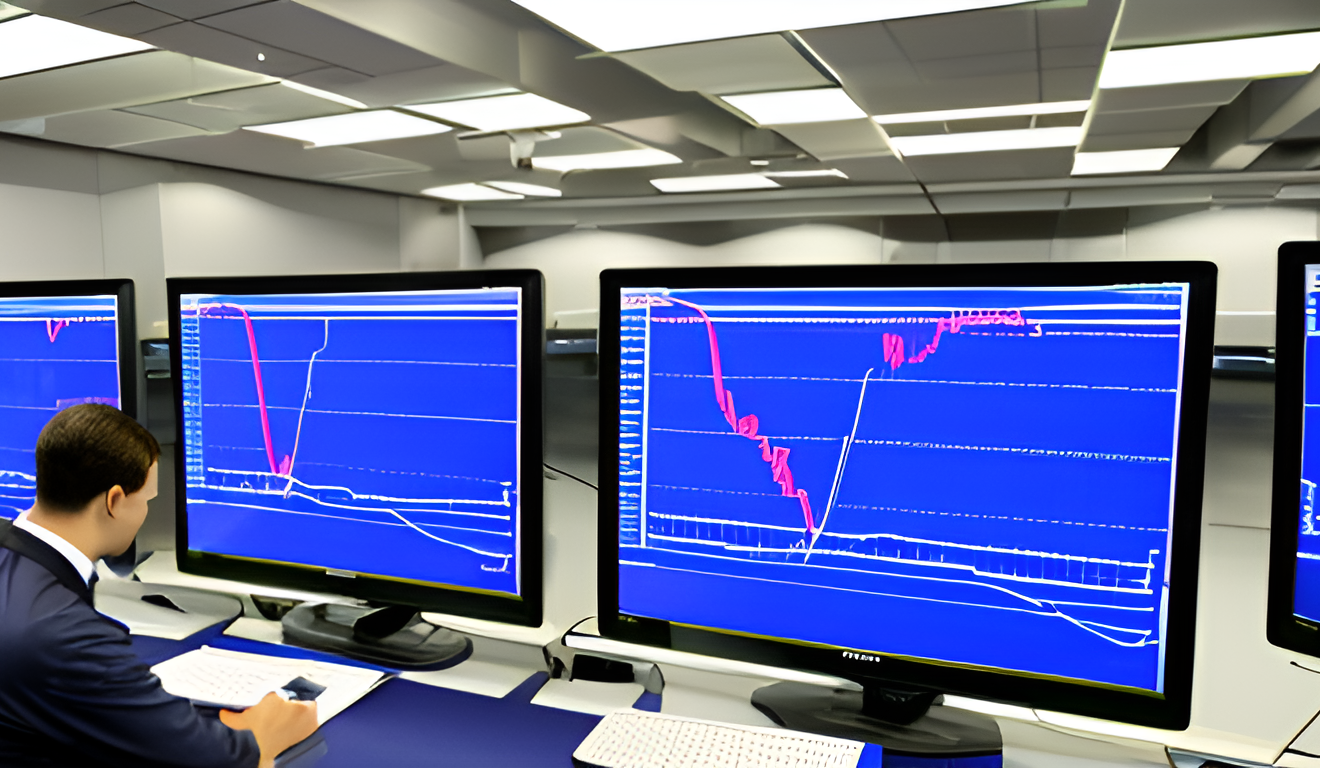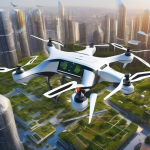How AI Is Revolutionizing Sports Analytics in the Olympics

The world of sports is undergoing a seismic shift, and at the heart of this transformation is artificial intelligence. As we gear up for the Olympics, AI is not just a buzzword; it’s a game-changer that is reshaping how athletes train, compete, and ultimately, succeed. Imagine a coach having the ability to predict an athlete’s performance with pinpoint accuracy or an athlete receiving personalized training recommendations based on real-time data. This is the power of AI in sports analytics, and it’s making waves that are impossible to ignore.
From enhancing performance analysis to revolutionizing training methods, AI is paving the way for unprecedented advancements in Olympic sports. Athletes are no longer just relying on their instincts or traditional training methods; they are now equipped with cutting-edge technology that provides deep insights into their performance metrics. This level of detail allows for tailored training regimens that cater to the individual needs of each athlete, ensuring they can push their limits safely and effectively.
Moreover, the integration of AI into sports analytics is not just about data; it’s about making informed decisions. Teams are utilizing AI-driven data collection techniques, such as wearable technology and sophisticated video analysis, to gather real-time performance data. This information is invaluable, allowing coaches to make strategic decisions on the fly, optimizing their teams’ chances of success in the highly competitive Olympic arena.
As we delve deeper into this topic, we will explore the various applications of AI in sports, including predictive analytics and machine learning algorithms. These technologies are not just enhancing performance; they are redefining what it means to train and compete at the highest level. With the Olympics on the horizon, the role of AI is more critical than ever, promising a future where technology and sports merge seamlessly to create a new era of athletic excellence.
The Role of AI in Sports Performance Analysis
Artificial Intelligence (AI) is not just a buzzword; it’s a game-changer in the world of sports performance analysis. Imagine having a personal coach who knows your strengths and weaknesses better than you do! That’s what AI brings to the table. By leveraging vast amounts of data, AI technologies are enhancing the way athletes’ performances are analyzed, providing insights that were previously unattainable. This enables coaches to create personalized training regimens that cater specifically to each athlete’s needs.
One of the most fascinating aspects of AI in sports is its ability to process data at lightning speed. Traditional methods of analysis often rely on subjective observations, but AI uses objective data to highlight performance metrics that can be quantified. This means that athletes can receive real-time feedback, allowing them to make adjustments on the fly. For instance, AI can analyze factors such as speed, agility, and endurance, offering a comprehensive view of an athlete’s performance.
Moreover, the integration of AI into sports performance analysis is paving the way for predictive modeling. Coaches can now forecast an athlete’s performance based on historical data and current training conditions. This predictive capability not only helps in optimizing training schedules but also plays a crucial role in injury prevention. By identifying patterns that lead to fatigue or overtraining, AI can alert coaches and athletes before problems arise.
To illustrate the impact of AI, consider the following table that summarizes the key benefits:
| Benefit | Description |
|---|---|
| Real-Time Feedback | Provides immediate insights for performance adjustments. |
| Data-Driven Decisions | Helps coaches make informed choices based on objective metrics. |
| Injury Prevention | Identifies risk factors to minimize the chance of injuries. |
| Customized Training | Creates tailored training programs based on individual needs. |
In conclusion, the role of AI in sports performance analysis is transforming how athletes train and compete. As technology continues to advance, we can only expect to see more innovative applications that will push the boundaries of human performance in sports.
Data Collection Techniques in Olympic Sports
In the fast-paced world of Olympic sports, data collection techniques have become essential for enhancing athlete performance and strategy. With the advent of technology, teams are now equipped with tools that gather real-time data, allowing for informed decision-making based on accurate metrics. This transformation is not just about collecting numbers; it’s about turning those numbers into actionable insights that can make or break an athlete’s performance.
One of the most exciting advancements in this realm is the use of wearable technology. These devices, ranging from smartwatches to specialized fitness trackers, allow athletes to monitor various physiological parameters such as heart rate, speed, and even biomechanics. Imagine a sprinter wearing a smartwatch that provides instant feedback on their running form—this is the kind of real-time analysis that can lead to significant improvements in performance. The data collected can be analyzed to tailor training regimens specifically to an athlete’s needs, ensuring that they are always at their peak.
Additionally, video analysis has emerged as a powerful tool in sports training. Coaches and athletes can now record training sessions and competitions, dissecting every movement and technique. This detailed breakdown helps in identifying areas for improvement and refining strategies. For instance, a gymnast can review their routines frame by frame, pinpointing exactly where they might lose points and making adjustments accordingly. The combination of video analysis and wearable technology creates a comprehensive data collection ecosystem that is revolutionizing how athletes prepare for the Olympics.
However, it’s important to note that while these techniques offer incredible benefits, they also come with challenges. Athletes must adapt to new technologies, which can sometimes be overwhelming. Moreover, there are concerns regarding data privacy and the ethical implications of collecting and analyzing personal information. Striking a balance between leveraging technology for performance enhancement and maintaining the integrity of the athlete’s personal data is crucial.
In summary, the integration of advanced data collection techniques in Olympic sports is not just a trend; it’s a game-changer. As these technologies evolve, they will continue to shape the future of athletic performance, providing insights that were once unimaginable.
Wearable Technology and Its Impact
In recent years, wearable technology has emerged as a game-changer in the realm of sports, particularly within the high-pressure environment of the Olympics. These devices, which athletes can don during training and competition, are not just fancy gadgets; they are powerful tools that provide real-time data and insights into an athlete’s performance. Imagine having a personal coach that tracks your every move, analyzes your performance, and offers suggestions to improve—all while you focus on your game. That’s precisely what these wearables do!
Wearable devices track a plethora of metrics, including biomechanics, heart rate, and even sleep patterns, offering a comprehensive view of an athlete’s physical state. For example, a runner might use a smart shoe that records their foot strike and gait, while a swimmer could wear a waterproof smartwatch that monitors their stroke efficiency. This data is invaluable, as it allows athletes and coaches to pinpoint areas for improvement, tailor training regimens, and ultimately enhance performance.
However, the impact of wearable technology extends beyond performance tracking. It plays a crucial role in injury prevention. By continuously monitoring physical exertion and stress levels, these devices can alert athletes to potential risks before they escalate into serious injuries. For instance, if a device detects unusual strain on a particular muscle group, it can prompt the athlete to adjust their training or seek medical advice, potentially saving them from sidelining injuries.
Despite their numerous advantages, it’s essential to recognize that wearable technology is not without its challenges. Issues such as data privacy and the potential for over-reliance on technology pose significant concerns. Athletes must balance the insights gained from wearables with their intuition and experience to avoid becoming overly dependent on data. As technology continues to evolve, the dialogue around its ethical use will become increasingly important.
In summary, wearable technology is reshaping the landscape of sports analytics in the Olympics. By providing critical insights into performance and health, these devices are not just enhancing athletes’ training but are also paving the way for a new era of sports science. As we look to the future, the integration of such technology will undoubtedly play a pivotal role in the quest for Olympic gold.
Types of Wearable Devices
In the fast-paced world of Olympic sports, wearable devices have emerged as game-changers, offering athletes an unprecedented opportunity to enhance their performance. These devices come in various forms, each tailored to provide specific insights into an athlete’s physical condition and performance metrics. From smartwatches to fitness trackers, the diversity of wearable technology is astounding, and each type plays a crucial role in shaping an athlete’s training regimen.
One of the most popular types of wearable devices is the smartwatch. These multifunctional gadgets do more than just tell time; they monitor heart rates, track workouts, and even provide real-time feedback during training sessions. Athletes can access vital statistics at a glance, enabling them to make immediate adjustments to their routines. For instance, a swimmer might use a smartwatch to monitor their stroke rate and adjust their technique accordingly.
Another significant category is fitness trackers. These devices are specifically designed to monitor daily activity levels, sleep patterns, and calories burned. They offer a comprehensive view of an athlete’s lifestyle, helping them to identify areas for improvement. For example, a track athlete might use a fitness tracker to ensure they are getting adequate rest and recovery, which is essential for peak performance.
Additionally, there are specialized biometric sensors that provide in-depth analysis of an athlete’s physiological data. These sensors can measure muscle activity, lactate threshold, and even hydration levels. Such detailed information allows coaches to tailor training programs to the individual needs of each athlete, maximizing their potential while minimizing the risk of injury.
Despite the advantages, it’s essential to acknowledge the challenges that come with these devices. Athletes must navigate the complexities of integrating technology into their training while maintaining focus on their performance. Furthermore, as the reliance on wearable technology increases, so do concerns about data privacy and the ethical implications of monitoring athletes so closely.
Challenges of Wearable Technology
While wearable technology has undoubtedly transformed the landscape of sports analytics, it comes with its own set of challenges that can hinder its effectiveness. One of the most pressing issues is data privacy. Athletes are often required to share sensitive information, such as their health metrics and performance data, which raises concerns about who has access to this information and how it is used. With data breaches becoming increasingly common, ensuring that athletes’ personal data is protected is paramount.
Another challenge is the adaptation to new technologies. Athletes are trained to perform at their best under pressure, and introducing new devices can sometimes disrupt their focus and routine. For instance, if an athlete is constantly adjusting a wearable device or if the device malfunctions during training, it can lead to frustration and affect their performance. This adaptation period can be particularly crucial during high-stakes competitions like the Olympics, where every second counts.
Moreover, there is the issue of over-reliance on technology. While data-driven insights can enhance performance, they should not replace the fundamental skills and instincts that athletes develop through years of training. Coaches and athletes must strike a balance between utilizing technology and trusting their own abilities. This reliance can sometimes lead to a disconnect between the athlete’s natural instincts and the data provided by wearable technology.
In summary, while wearable technologies offer significant advantages for performance tracking and training optimization, the challenges surrounding data privacy, adaptation, and over-reliance must be addressed. As the field continues to evolve, finding solutions to these challenges will be essential for maximizing the benefits of wearable technology in sports.
Video Analysis in Sports Training
Video analysis is becoming a **game-changer** in the realm of sports training, particularly in the high-stakes environment of the Olympics. With the ability to dissect every movement, coaches and athletes can now unlock insights that were once hidden in the blur of fast-paced competition. Imagine being able to pause a moment in time and scrutinize an athlete’s technique frame by frame; that’s the power of video analysis. This technology not only enhances performance but also fosters a deeper understanding of the strategies that lead to success.
Utilizing advanced software, teams can capture and analyze footage from various angles, allowing for a comprehensive review of each athlete’s performance. This analysis can pinpoint areas for improvement, whether it’s an athlete’s posture during a jump or their foot placement during a sprint. The **benefits** of video analysis extend beyond mere observation; it helps in formulating tailored training programs that address specific weaknesses. For example:
- **Technique Improvement:** Athletes can visualize their movements and make necessary adjustments.
- **Tactical Development:** Coaches can analyze opponents’ strategies, leading to better-prepared athletes.
- **Performance Tracking:** Continuous video feedback allows for monitoring progress over time.
Moreover, the integration of video analysis with AI technologies is paving the way for even more sophisticated methodologies. Coaches can leverage machine learning algorithms to detect patterns in performance data, allowing them to make predictions about future performances. This synergy between technology and human expertise creates a **feedback loop** that continually enhances training methodologies.
As we look towards the future, the role of video analysis in sports training will undoubtedly expand. With innovations like **360-degree cameras** and **augmented reality**, the potential for immersive training experiences is limitless. Athletes will not only train harder but smarter, armed with insights derived from their own performances. The question remains: how will the next generation of athletes harness this technology to reach new heights in Olympic sports?
Predictive Analytics in Sports Strategy
Predictive analytics is making waves in the world of sports, especially in the high-stakes environment of the Olympics. Imagine being able to forecast an athlete’s performance with a level of accuracy that was once thought impossible. This is no longer a distant dream; it’s a reality thanks to the power of data and advanced algorithms. By analyzing historical data and current performance metrics, teams can make informed decisions that could mean the difference between standing on the podium or going home empty-handed.
At its core, predictive analytics uses statistical algorithms and machine learning techniques to identify patterns in data. For Olympic teams, this means they can anticipate outcomes and optimize their strategies in real-time. Coaches can now simulate various scenarios and understand how different variables—like weather conditions, athlete fatigue, and even competitor performance—can impact results. This level of insight allows for a more tailored approach to training and competition, ultimately enhancing the chances of success.
One of the most significant advantages of predictive analytics is its ability to transform raw data into actionable insights. For example, a team might analyze data from previous competitions to identify which training methods yielded the best results. By employing predictive models, they can focus on strategies that have the highest probability of success. Here’s how it typically works:
- Data Collection: Gathering extensive data from various sources, such as previous competitions, training sessions, and athlete health metrics.
- Model Development: Using machine learning algorithms to develop models that can predict future performance based on historical data.
- Scenario Analysis: Running simulations to test different strategies and conditions, allowing teams to prepare for any situation.
As we look to the future, the role of predictive analytics in sports strategy will only grow. The integration of AI and machine learning into training regimens is not just a trend; it’s becoming essential for Olympic teams aiming to maximize their performance. The potential to refine techniques and strategies through data-driven insights is an exciting frontier that could redefine how athletes prepare for the ultimate test of their abilities.
Machine Learning Algorithms in Sports
In the fast-paced world of sports, machine learning algorithms are becoming game-changers. These advanced algorithms analyze vast amounts of data, helping coaches and teams make informed decisions that can significantly impact performance. Imagine having a coach who can predict the outcome of a match based on historical data and player performance metrics—this is the power of machine learning!
Machine learning works by identifying patterns in data that might not be visible to the human eye. For instance, by examining past performance statistics, teams can identify strengths and weaknesses in their competitors. This analysis can lead to tailored training programs that focus on specific skills or strategies, ultimately enhancing an athlete’s performance. One fascinating aspect is how these algorithms can adapt over time. As they gather more data, they refine their predictions, leading to increasingly accurate insights.
To illustrate, consider the following table showcasing different machine learning applications in sports:
| Application | Description |
|---|---|
| Performance Prediction | Forecasting athlete performance based on historical data. |
| Injury Prevention | Analyzing training loads and biomechanics to predict injury risks. |
| Game Strategy | Using data to develop game tactics based on opponent analysis. |
Furthermore, the integration of machine learning isn’t just about improving individual performance; it also enhances team dynamics. By analyzing player interactions and movements during games, teams can optimize positioning and strategies, ensuring that every player is utilized effectively. This level of analysis can be likened to having a personal assistant who not only understands your needs but also anticipates them before you even ask!
In conclusion, machine learning algorithms are revolutionizing the way sports teams operate. By leveraging data-driven insights, athletes and coaches can make smarter decisions that lead to better performance outcomes. As technology continues to evolve, we can only expect these algorithms to become even more sophisticated, reshaping the future of sports analytics.
Case Studies of Successful Implementation
In the world of Olympic sports, the integration of artificial intelligence has led to remarkable improvements in training and performance. Let’s dive into some compelling case studies that showcase how AI has been successfully implemented to elevate athletes’ capabilities and enhance team strategies.
One notable example is the Australian Swimming Team, which has embraced AI-driven analytics to refine their training approaches. By utilizing machine learning algorithms to analyze swimmers’ performance data, coaches can identify specific areas for improvement. For instance, they can assess stroke efficiency and turn times, allowing swimmers to make targeted adjustments. This data-driven approach has not only improved individual performances but has also contributed to the team’s overall success in international competitions.
Another inspiring case is that of the U.S. Olympic Track and Field Team, which has leveraged video analysis technology extensively. Coaches use advanced video software to break down athletes’ techniques frame by frame. This meticulous analysis helps in identifying subtle flaws in running form or jumping techniques that could hinder performance. By providing athletes with immediate feedback, they can make real-time adjustments, leading to better results on the track.
Moreover, the British Cycling Team has adopted wearable technology to monitor physiological metrics during training sessions. Devices that track heart rate, cadence, and power output allow coaches to gather real-time data. This information is crucial for tailoring training regimens to each athlete’s needs, ensuring that they are not only pushing their limits but also recovering effectively. The result? A surge in medal counts at recent Olympic Games.
Overall, these case studies illustrate the transformative power of AI in sports. By harnessing technology, teams can make informed decisions, optimize training, and ultimately enhance performance. As we look to the future, the potential for further advancements in AI applications within Olympic sports seems limitless.

The Future of AI in Olympic Sports
The future of AI in Olympic sports is not just bright; it’s practically glowing with potential! As technology continues to advance at a breakneck speed, we can expect AI to play an even more significant role in shaping how athletes train, compete, and recover. Imagine a world where augmented reality (AR) tools provide real-time feedback during practice, or where advanced simulations allow athletes to experience their competition environments before they even step onto the field. This is the future we’re heading toward.
One of the most exciting developments on the horizon is the integration of immersive technologies into training regimens. For instance, virtual reality (VR) could allow athletes to visualize their performances in a simulated Olympic environment, helping them to mentally prepare for the pressures of competition. This type of training could not only enhance performance but also reduce anxiety, as athletes become familiar with the challenges they will face.
Furthermore, as AI systems become more sophisticated, we can expect them to provide even deeper insights into athlete performance. Predictive analytics will refine itself, enabling coaches to tailor strategies that account for an athlete’s unique strengths and weaknesses. This personalized approach could mean the difference between standing on the podium and just participating.
However, with great power comes great responsibility. The increasing reliance on AI raises ethical considerations that cannot be ignored. Questions about fairness, data privacy, and the potential for over-reliance on technology are at the forefront of this conversation. It’s essential to strike a balance between leveraging AI’s capabilities and maintaining the essence of sportsmanship.
In conclusion, the future of AI in Olympic sports is a thrilling landscape of possibilities. As we embrace these advancements, we must also navigate the challenges they present. With the right approach, AI could not only enhance athletic performance but also ensure that the spirit of competition remains intact.
Emerging Technologies to Watch
The landscape of sports analytics is rapidly evolving, and several emerging technologies are set to redefine how athletes prepare for the Olympics. One of the most exciting advancements is augmented reality (AR). Imagine athletes donning AR glasses that overlay critical performance metrics onto their field of vision during training sessions. This immersive experience allows them to visualize their movements in real-time, making adjustments on the fly. It’s like having a personal coach right in front of you, guiding you every step of the way!
Another groundbreaking technology is advanced simulations. These simulations can replicate various competitive environments, enabling athletes to train under conditions that mimic actual competitions. For instance, a swimmer could practice in a simulated pool that adjusts the water currents to reflect different racing scenarios. This kind of training can dramatically enhance an athlete’s adaptability and mental resilience.
Additionally, the integration of machine learning with biomechanics analysis is gaining traction. By analyzing vast amounts of movement data, machine learning algorithms can identify subtle patterns that human coaches might miss. This technology not only helps in refining techniques but also plays a crucial role in injury prevention. By understanding an athlete’s biomechanics in-depth, coaches can tailor training programs that minimize the risk of injury.
As we look to the future, it’s essential to keep an eye on these technologies. They promise not only to enhance performance but also to provide athletes with a comprehensive understanding of their physical capabilities. However, with these advancements come ethical considerations. Balancing the benefits of technology with the potential for over-reliance is crucial. The goal should always be to enhance human performance without losing the essence of the sport.
Ethical Considerations in AI Usage
The rapid integration of artificial intelligence into Olympic sports raises significant ethical questions that cannot be overlooked. As teams and athletes increasingly rely on AI for performance enhancement, issues of fairness, data privacy, and the potential for over-reliance on technology come to the forefront. It’s crucial to strike a balance between leveraging AI’s capabilities and maintaining the integrity of the sport.
One of the primary concerns revolves around fairness. With AI tools being more accessible to some teams than others, there’s a risk of creating an uneven playing field. This disparity could lead to ethical dilemmas regarding which athletes benefit from advanced analytics and which do not. For example, if a team has the resources to invest in cutting-edge AI technology while others cannot, does that compromise the spirit of competition? The challenge lies in ensuring that all athletes have equal access to these transformative tools.
Another pressing issue is data privacy. Wearable devices and performance tracking systems collect vast amounts of personal data, raising concerns about who owns this information and how it is used. Athletes must trust that their data will not be misused or exploited, which leads to the necessity for stringent privacy regulations. A transparent framework governing the use of AI in sports is essential to safeguard athletes’ rights while fostering innovation.
Moreover, the potential for over-reliance on technology can lead to a critical question: can human intuition and experience still play a role in sports? While AI can analyze data and suggest strategies, the human element—coaches’ instincts, athletes’ gut feelings—should not be sidelined. It’s vital to maintain a harmonious relationship between AI-driven insights and traditional methods of training and competition.
In conclusion, as we embrace the future of AI in Olympic sports, addressing these ethical considerations is paramount. By fostering an environment where technology complements human effort without compromising fairness or privacy, we can ensure that the spirit of the Olympics remains intact while benefiting from the advancements that AI offers.
Frequently Asked Questions
- How is AI changing sports analytics in the Olympics?
AI is transforming sports analytics by providing in-depth performance analysis, enabling personalized training regimens, and optimizing strategies through predictive analytics. This technology allows coaches and athletes to make data-driven decisions that enhance performance and improve outcomes.
- What types of wearable technology are used in Olympic sports?
Wearable technology includes devices like smartwatches, fitness trackers, and specialized sensors. These devices collect crucial data on biomechanics, heart rate, and other performance metrics, helping athletes monitor their progress and adapt their training strategies effectively.
- What are the challenges associated with using wearable technology?
While wearable devices offer significant benefits, they also present challenges such as data privacy concerns and the need for athletes to adapt to new technologies. Balancing the integration of these devices while maintaining peak performance can be tricky.
- How does video analysis enhance sports training?
Video analysis allows coaches and athletes to break down techniques and strategies in detail. By reviewing footage, they can identify areas for improvement, leading to enhanced performance and better tactical decisions during competitions.
- What role does predictive analytics play in sports strategy?
Predictive analytics helps teams forecast outcomes and optimize their strategies based on historical data. This enables coaches to make informed decisions before and during competitions, ultimately improving their chances of success.
- What are some emerging technologies in Olympic sports?
Emerging technologies like augmented reality and advanced simulations are set to revolutionize training methods. These innovations provide immersive experiences that can redefine how athletes prepare for competitions.
- What ethical considerations arise from using AI in sports?
As AI becomes more prevalent in sports, ethical questions about fairness, data privacy, and the potential for over-reliance on technology emerge. It’s essential to approach the implementation of AI with a balanced perspective to ensure fair play and athlete well-being.













